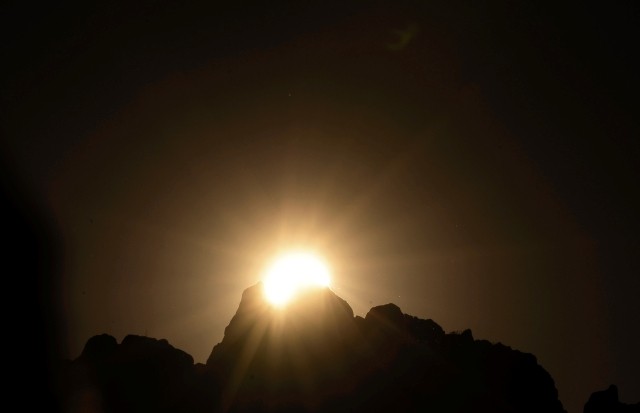Summer Solstice 2012: Smile, It is the First Day of Summer [PHOTOS]
The 2012 summer solstice, or the first day of summer, came in all its glory on 20 June in the Northern Hemisphere - even if the British version turned into a damp squib within 24 hours.
The day was welcomed around the world in different ways. While some people, including pregnant women, practiced yoga on the morning of the summer solstice at New York's Times Square, a few others celebrated the morning of the longest day of the year at the Kokino megalithic observatory in Macedonia.
Summer Solstice 2012 Date
A solstice occurs twice every year in June and December - these are called the summer and winter solstices, respectively. Although the summer solstice falls on 21 June, this year it occurred a day before since 2012 is a leap year.
"In general, the exact timing of the summer solstice changes from year to year, but there's a bigger jump when you have a leap year," Mark Hammergren, an astronomer at the Adler Planetarium in Chicago, told National Geographic News, "But it's still always going to be around June 20 or 21."
Summer Solstice is First Day of Summer
The summer solstice is officially the first day of summer in the Northern Hemisphere. On this day, the sun is at its highest point at noon, in a directly overhead position, since the earth's North Pole is tilted at its maximum towards the sun. However, the sun's overhead position varies for different latitudes, according to astronomers.
Interestingly, for the Southern Hemisphere the summer solstice day is actually the winter solstice - the shortest day of the year.
Summer Solstice Celebrations
Solstices have been celebrated for ages, proof of which has been found in various ancient monuments and their structural designs. The most famous, perhaps, is Stonehenge, where thousands of observers still gather to see sunrise on a solstice.
Other ancient monuments built with solstice observing markers include the Kokino megalithic observatory, an archaeological site in the northeastern Republic of Macedonia, which has stone carved markers to track the movements of the sun and the moon.
In ancient times, summer and winter solstices were a way to identify change in growing and harvest seasons for following correct agricultural practices and therefore celebrations were a part of solstices.
Check out below pictures of summer solstice 2012 celebrations around the world...



© Copyright IBTimes 2025. All rights reserved.





















